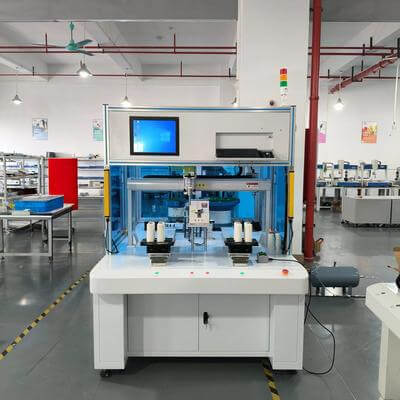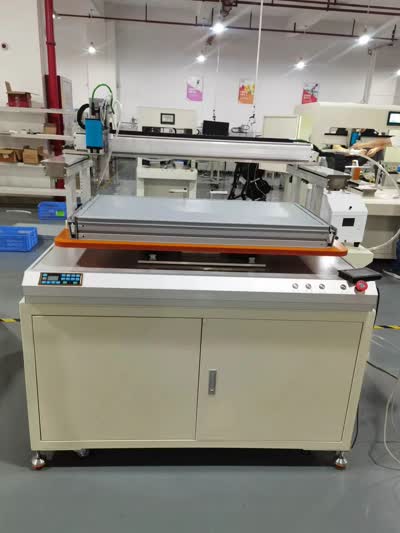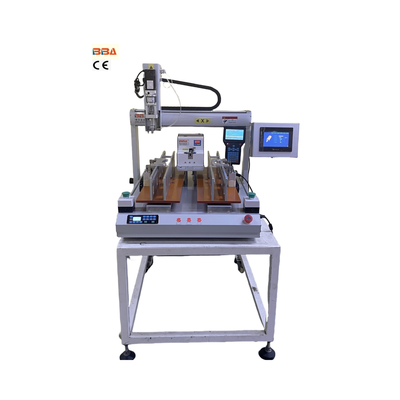Dual-Head & Triple-Head Tightening Machines | Industrial Automation
| Product Name | Applicable industries |
| Smart Screw Driving Machine | Drone and UAV Manufacturing |
Dual-Head and Triple-Head Options in Tightening Machines
In modern industrial automation, efficiency and precision are paramount. Tightening machines play a critical role in assembly lines across various sectors, including automotive, electronics, and aerospace. As production demands evolve, the need for faster and more versatile solutions has led to the development of advanced multi-head tightening systems. Among these, dual-head and triple-head configurations have emerged as game-changers, offering significant improvements in productivity and flexibility.
What Are Multi-Head Tightening Systems?
Multi-head tightening systems are designed to perform multiple tightening operations simultaneously or sequentially within a single workstation. A dual-head system features two independent tightening spindles, while a triple-head system incorporates three. These systems are integrated into automated machinery and can be programmed to handle complex assembly tasks with high accuracy and repeatability.
Key advantages of multi-head systems include reduced cycle times, minimized floor space requirements, and enhanced process control. By consolidating multiple operations into one station, manufacturers can streamline their production lines and reduce the need for redundant equipment.
Benefits of Dual-Head Tightening Machines
Dual-head tightening machines are ideal for applications requiring two fasteners to be tightened concurrently. Common use cases include symmetric components like flange assemblies, motor housings, or electronic enclosures. The simultaneous operation ensures uniform clamping force and reduces the risk of imbalance or distortion in the assembled product.
- Increased Throughput: By doubling the number of tightening operations per cycle, dual-head systems can significantly boost production rates.
- Improved Accuracy: Synchronized tightening heads apply consistent torque and angle values, ensuring higher joint quality.
- Space Efficiency: Combining two functions into one machine reduces the overall footprint of the assembly line.
Advantages of Triple-Head Tightening Machines
For more complex assemblies, triple-head tightening machines offer even greater capabilities. These systems are suited for components with three or more fasteners arranged in patterns, such as valve covers, pump assemblies, or structural brackets. The triple-head configuration allows for sequential or simultaneous tightening, depending on the process requirements.
- Enhanced Flexibility: Programmable patterns enable adaptation to various product designs without hardware changes.
- Superior Process Control: Advanced controllers monitor each spindle independently, providing real-time data and error proofing.
- Reduced Capital Expenditure: Eliminating the need for multiple single-spindle machines lowers initial investment and maintenance costs.
Applications and Industry Use Cases
Multi-head tightening machines are widely adopted in industries where precision and speed are critical. In automotive manufacturing, they are used for engine assembly, transmission systems, and brake components. Electronics manufacturers leverage these systems for securing housings and heat sinks, while aerospace applications include critical structural joints and avionics assemblies.
The adaptability of dual-head and triple-head systems makes them suitable for both high-volume production and custom, low-volume applications. With modular designs, these machines can be reconfigured or upgraded to meet changing production needs.
Conclusion
Dual-head and triple-head tightening machines represent a significant advancement in industrial automation, offering unparalleled efficiency, accuracy, and versatility. By enabling multiple tightening operations in a single setup, these systems help manufacturers achieve higher productivity, reduce costs, and maintain consistent quality standards. As technology continues to evolve, multi-head tightening solutions will remain at the forefront of innovative assembly processes, driving progress across global industries.



